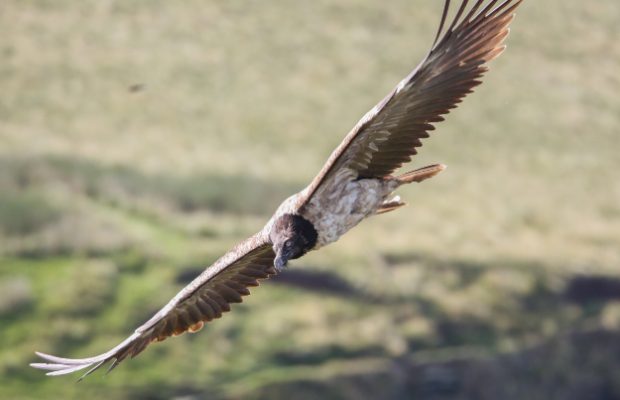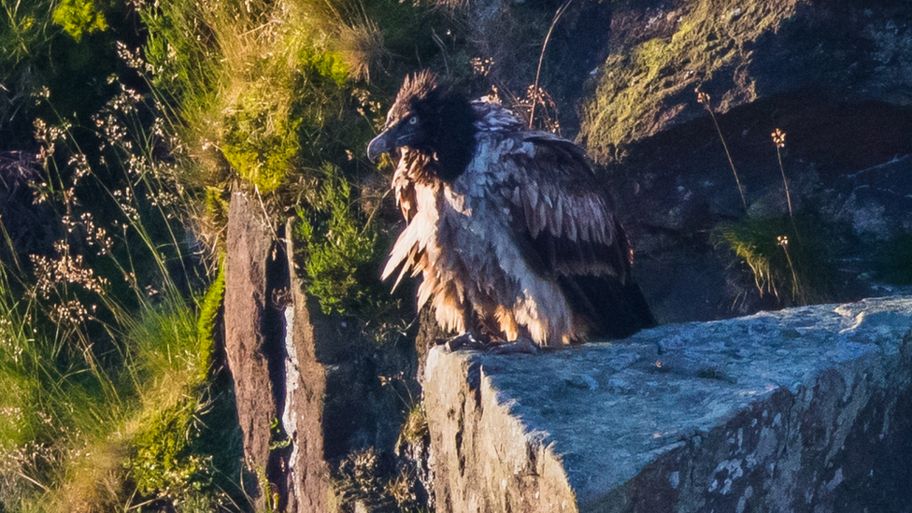- Home
- News
- What’s On
- Activities for Children
- Arts & Crafts
- Autos and Bikes
- Business events
- Car Boot & Auctions
- Charity events
- Churches & Religious
- Comedy
- Dance
- Days out & Local interest
- Education
- Exhibition
- Film
- Gardening & Horticulture
- Health
- Markets & Fairs
- Music
- Nature & Environment
- Spiritual
- Sport
- Talks and Discussions
- Theatre and Drama
- Business
- Local Information
- Jobs
- Deaths
- Charity events
- Contact Us
Peak Park bearded vulture

Image: Bearded vulture in flight over the Peak District National Park. ⓒ Austin Morley.
Sarah Fowler, chief executive of the Peak District National Park has been speaking on the appearance of a bearded vulture in the skies over the Peak District.
She said: “In a year that was already written into the history books by the unusual and unprecedented, no-one in the Peak District expected our skies to be graced by one of Europe’s most magnificent and rarest birds.
“The arrival of a bearded vulture to the Dark Peak has understandably become a source of wonder and excitement in recent weeks – not only for those who carry a passion for nature, but others who simply wish to marvel at a bird of prey larger than anything ever witnessed in our almost 70 years as a National Park.
“The vulture’s appearance at a time when many of us were taking the first steps back into nature since lockdown has no doubt added to its popularity as a ‘must-see’ for wildlife watchers.
“Such widespread interest also demonstrates the power of birds of prey as a gateway to a wider discovery of our wildlife. Witnessing the return of the osprey, white-tailed eagle and red kite to UK skies has in turn shown the multi-million pound economic contribution these species can make through nature-based tourism.

“These are also flagship species that thrive when we are getting things right in our protected landscapes; whether within our 15 UK national parks and Areas of Outstanding Natural Beauty, or across Europe from where our bearded vulture made its headline-grabbing flight.
“We still have some way to go to achieve the same recognition for our native birds of prey in the Peak District, but this recent breeding season has once again shown the green shoots of recovery continue to grow, with species such as peregrine and goshawk in the Dark Peak nesting successfully across multiple locations. Wildlife crime remains a factor in this progress, not only in our Bird of Prey Initiative study area where the bearded vulture has made its temporary home, but elsewhere in the National Park where police and others continue to work on tackling criminality impacting on our raptors.
“Whilst this most recent visitor is unlikely to be a long-term fixture due to our seasonal conditions not matching that of its Alps or Pyrenees home, the bearded vulture offers a glimpse of a future where nature-based tourism is an integral part of our already rich offer for visitors to explore.
“Such significant and specific interest in our National Park does not come without its challenges. Maintaining responsible visitor activity; car parking, accessing land appropriately and leaving the outdoors as we find it are all part of the picture. I would particularly like to thank those who have supported the presence of the bearded vulture whilst keeping the ethos of being ‘Peak District Proud’ at the heart of visitors’ experiences.
The fact the vulture has appeared confident to remain within a relatively modest area of the Peak District is testament to all those working in the countryside as custodians of our protected landscapes; from the National Trust and Derbyshire Wildlife Trust, to local volunteers, landowners, gamekeepers and land managers who have all positively acknowledged the vulture’s ground-breaking presence and supported its wellbeing.
“For those yet to visit us for a chance to witness this remarkable sight, I would urge you to ‘know before you go’ – understand where you can park safely, plan your trip and route carefully and always have the vulture’s welfare as your utmost priority above a slightly closer view or more engaging photograph. Spending a penny, or a pound in our local communities will also help our Peak District businesses to continue to build their resilience against the effects of Covid-19.
“Whilst the bearded vulture remains a very welcome visitor, as summer turns to autumn our attention will naturally turn to its own welfare in our changeable weather conditions. Although any intervention remains a last resort, conservation experts both locally and from the continent are already exploring how the bird may be returned safely to its home reintroduction area, as all individual bearded vultures remain vital to the scheme.”

You must be logged in to post a comment Login